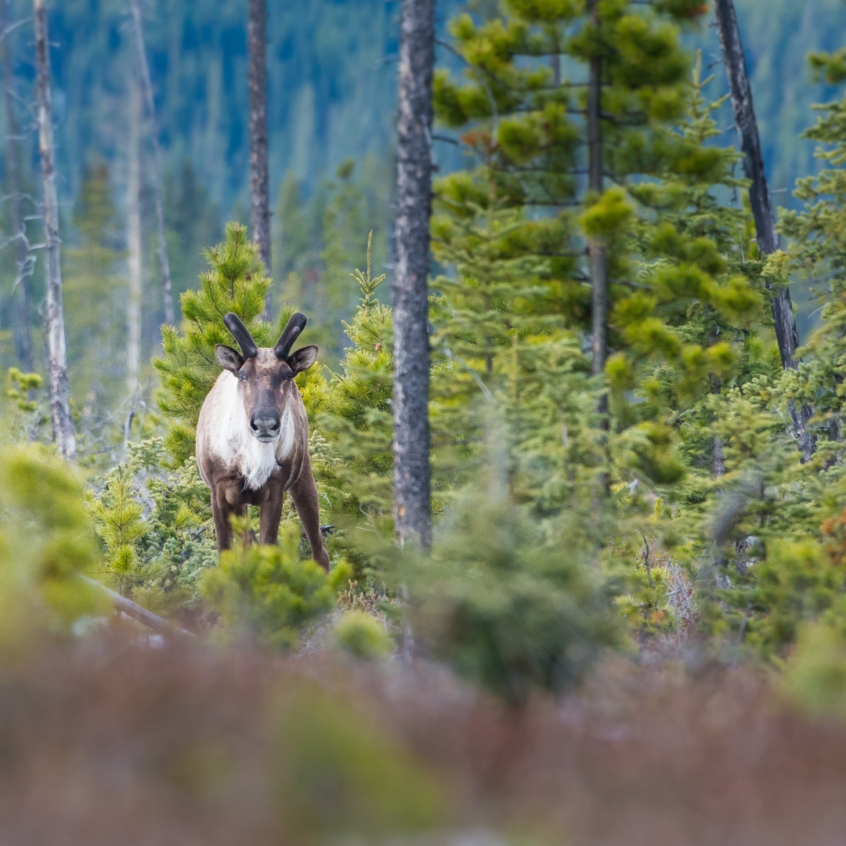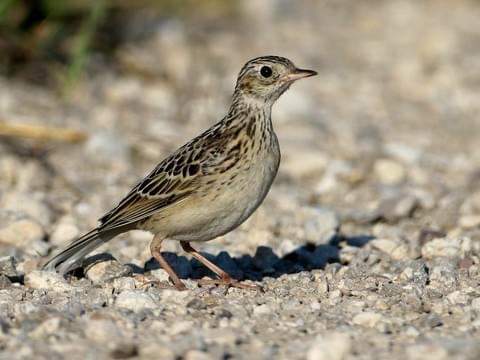Woodland caribou are a large mammal species that often get mistaken for moose on the Canadian quarter. They are an iconic species that roams the boreal forest as an indicator and umbrella species and they play a critical role to some Indigenous communities.
Mormon Metalmark (Prairie Population)
The Mormon Metalmark is a small butterfly that is found in two distinct populations in Canada, one in British Columbia and the other in Saskatchewan. They are listed as Special Concern under COSEWIC.
Burrowing Owl
Burrowing owls are long-legged, round, little owls that hunt during the day and night, and hide-out in underground burrows when they’re not searching for prey. Their ability to live in underground burrows sets them apart from all other species of owls.
Eastern Yellow-bellied Racer
As their name suggests, Eastern Yellow-bellied Racers are the fastest snake in Canada. They are also good climbers that are often spotted basking in shrubs. These snakes are non-venomous and harmless to humans. These snakes are found in Saskatchewan’s grasslands and are listed as threatened.
Greater Short-Horned Lizard
The Greater Short-horned lizard is the most northerly occurring iguanid lizard species in the world, with its northern limits reaching southern Alberta and Saskatchewan. It is the only lizard species found in these provinces.
Mountain Plover
Contrary to what their name suggests, mountain plovers are endemic to the Great Plains of North America and do not inhabit mountain environments or frequent shores like other species of plovers. They are rare in Canada, and listed as endangered under SARA.
Black-tailed Prairie Dog
While they may be regarded as a pest to farmers and grazing managers, Black-tailed Prairie Dogs are a keystone species of the prairies, providing habitat and food for many other grassland animals. They are listed as threatened under COSEWIC and Saskatchewan is the only place they are found within Canada.
Sprague’s Pipit
Sprague’s Pipit is a medium-sized, ground-nesting bird that is rarely seen. It is usually only detected by its unique song, which is often described as a series of descending tinkling, ethereal notes. It is endemic to the prairies and listed as threatened under SARA.
Loggerhead Shrike (Prairie subspecies)
Loggerhead shrikes aren’t your typical songbird. They are fierce predators, and since they don’t have sharp talons to hold prey, they use sharp objects instead, like barbed wire fence and thorns on trees. They are listed as threatened under COSEWIC.
Little Brown Myotis
At one time, the little brown myotis, also known as the little brown bat, was the most common bat species in Canada. However, their populations are declining at an alarming rate due to a spreading disease called white-nose syndrome.
- Page 1 of 2
- 1
- 2










